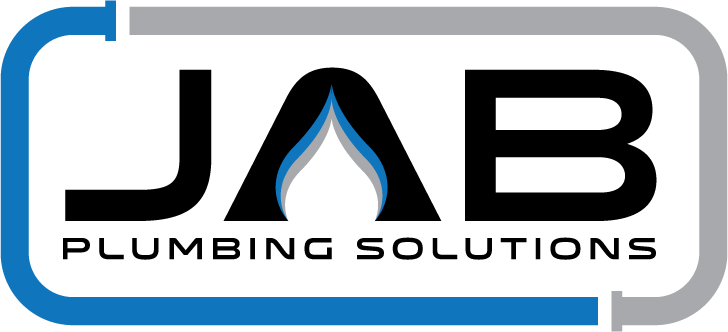Even though we utilise them every-day, the average person has little regard for the drains in their home. Conventionally, the only time people turn their attention to their home’s plumbing system, is when disaster strikes and a plumbing fixture stops working.
Taking the time to learn even primitive knowledge about drains, is beneficial as a homeowner as it can prevent blockages from occurring. This blog post outlines the main drains throughout the home and the most common causes of blockages respectively.
BATHROOM DRAINS
Bathroom drains comprise of the toilet drain, shower drain, bathtub drain, the vanity sink drain and the floor waste. Each of these drains have a drain opening and most can be fitted with a drain plug or stopper. The drain opening is where the wastewater enters the drain and begins its journey to the sewer main. Directly under the drain opening is a curved section of pipe - this is known as a trap. Drain traps are designed to hold standing water, sealing the drain system and preventing sewer gases from entering your home. Many bathroom drain blockages occur in this trap section.
COMMON CAUSES OF CLOGGED TOILETS
Toilets can become clogged when foreign items are flushed down the toilet and get stuck in the trap. Items that are commonly flushed down the toilet and contribute to blockages include: tampons, sanitary pads, cotton buds, dental floss, tissues, cat litter, wet-wipes, makeup pads and even food. Additionally, sometimes using thicker toilet paper or excess toilet paper in a single sitting, can also lead to blocked toilet drains.
CAUSES OF BATH, SHOWER AND BATHROOM SINK CLOGS
The bath, shower and bathroom sink drains are used to wash our hair and our bodies, to wash our pets, to shave, to brush our teeth and other personal hygiene tasks. Soap scum, hair and pet fur are hence significant causes of blockages within these plumbing systems. It is important to note that items including dental floss or cotton tips, can unknowingly get washed down these drains, leading to a clog.
FLOOR WASTE DRAIN BLOCKAGES
The small drain located on the bathroom floor is known as the floor waste fixture.The bathroom floor slopes slightly downwards towards the floor waste so that any overflow from other plumbing fixtures in the bathroom gets sucked down the floor waste. For instance, if you’re running a bath and forget about it, the overflowing water will go down the floor waste, preventing a flood in your home.
The floor waste is also used by the shower and bath to drain. The pipes at the base of a shower and bath feed into the central pipe below the floor waste, then into the plumbing below. A blocked floor waste therefore requires immediate attention to maintain the function of the bath and shower, to negate flooding and to prevent foul sewer smells from leaking into your bathroom.
Floor wastes get clogged with similar things that block the bath and shower drains including excess hair and soap scum. Essentially, anything that can build up and isn’t water soluble, can lead directly to a blocked floor waste.
KITCHEN SINK DRAINS AND COMMON CAUSES OF CLOGS
Similar to the bathroom sink drain, kitchen sink drains have a drain opening at the top and then a trap located directly underneath. Conventionally, the kitchen sink is used to wash fruit and vegetables, clean our hands and wash dirty dishes. Kitchen sinks are prone to clogging from food scraps, coffee grounds, grease, oil, soap and detergent. The best way to combat clogs in the kitchen sink is to be vigilant about what goes down the drain, especially in regards to children. Specifically, limiting the amount of grease and oil, is one of the best things you can do to maintain good drain health in the kitchen.
If you have a garbage disposal, it is also imperative to treat this fixture with care. Pasta, rice, coffee grounds or vegetable and fruit peels should not be thrown down the sink. Common misconceptions that should be avoided, include:
Putting eggshells down the disposal: this does not sharpen the blades
Putting citrus peels down the disposal: this does not deodorize the unit, it can actually cause significant damage
A good rule of thumb is actually the palm of your hand - if you can’t close your fist around the waste, it’s too big to put in the garbage disposal.
LAUNDRY DRAIN BLOCKAGES
As with other drains throughout the home, the laundry sinks get blocked when foreign debris and gunk gets washed down and stuck in the pipes. The washing machine discharge pipe is often hooked over the laundry tub, meaning that any sediment from the washing machine that isn’t caught by the lint filter ends up going down the sink. Regularly cleaning the lint filter is pivotal to prevent this from happening, even throughout big loads.
Furthermore, major causes of laundry sink blockages include lint, hair, soap scum and other things that accidentally end up in the washing machine including receipts and ticket stubs, chewing gum wrappers and tissues. Emptying all pockets before putting on a load, will prevent this from occurring.
-
JAB Plumbing Solutions specialise in drain cleaning and clogged drain repairs. No matter the cause or location of the blockage, our highly skilled plumbers have the tools and know-how to repair the issue. We offer upfront pricing and free no obligation quotes. Give our expert, friendly drainage plumbers a call today on 1800 225 552.







